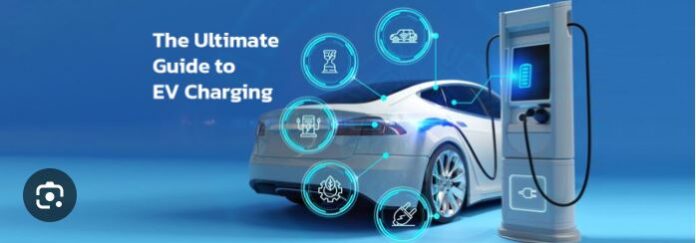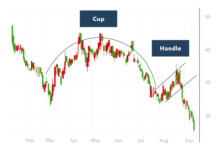In the realm of sustainable transport, electric vehicles (EVs) shine as eco-friendly champions. But navigating EV charging complexities can be bewildering. Enter the EV Charging Resource Guide.
Picture this: You’re on the road, ready to embrace the electric revolution, but questions flood your mind. How do you find charging stations? What’s the most efficient charging approach? How can you manage costs wisely? If these questions resonate, fear not. Delve into these complexities, unraveling the mysteries of EV charging.
Discover Electrly’s tailored charging solutions for homes, businesses, and industry. Embrace the electric future with Electrly, your go-to for charging station solutions.
Electrly’s Array of Charging Solutions
Electrly stands as a versatile and forward-thinking entity, offering comprehensive solutions for Electric Vehicle (EV) charging stations. They provide a wide range of intelligent and high-speed charging solutions suitable for a variety of settings, including residential, commercial, and industrial environments.
Supercharge your journey using Electrly’s DC Fast Chargers:
Indulge in lightning-speed charging with Electrly’s state-of-the-art DC fast charging solutions. As featured in the comprehensive EV charging resource guide, these cutting-edge products promise both speed and safety, enabling you to hit the road swiftly.
Simplified Home Charging Solutions by Electrly’s Level 1 Charger:
Discover Electrly’s user-friendly residential chargers, offering a straightforward solution for homeowners and apartment residents. This foolproof design allows you to conveniently charge your electric vehicle right in your driveway.
Energizing Enterprises with Electrly’s Level 2 Charging:
Empower your business with Electrly’s versatile commercial charging solutions. These scalable, user-centric chargers cater to a diverse range of businesses, ensuring a seamless and efficient charging experience for both customers and employees.
Demystifying EV Charging Connectors and Cables:
Charging your electric vehicle is a breeze, but the right choice of cables and connectors is paramount. Mode 1 charging cables, designed for e-bikes and scooters, are cost-effective but unsuitable for electric vehicles.
Typically, electric vehicles utilize Mode 2 charging cables, which easily plug into standard 120-volt outlets equipped with safety features and currency communication.
For added convenience, Mode 3 charging cables are compatible with Type 1 and Type 2 chargers, while Mode 4 cables cater to fast chargers with liquid-cooled elements for enhanced safety.
Different countries and vehicles employ a variety of charging plugs. In the United States, Type 1 plugs are prevalent, offering a power output of up to 7.4kW.
Guide to Establishing a Residential Electric Vehicle Charging Point
When it comes to setting up a residential EV charging point, there are two distinct avenues to explore: Level 1 or Level 2. Notably, Level 3 charging facilities are specifically tailored for commercial applications.
Level 1 Charging Stations: Streamlined Convenience
Electrly Level 1 charging stations offer a straightforward installation process. The procedure entails connecting one end of the cable to your electric vehicle, while the other end plugs into a conventional household socket, typically operating at 110-120 volts of alternating current (AC).
While this approach provides a relatively leisurely charging rate, it is ideally suited for plug-in hybrid electric vehicles (PHEVs) equipped with smaller batteries (less than 25 kWh). Such vehicles demand less power to achieve a complete charge within a reasonable timeframe.
Level 2 Electric Vehicle Service Equipment (EVSE): Elevate Your Charging Experience
Electrly Level 2 EVSE represents a residential charging solution that links to a 240-volt electrical circuit and can be professionally integrated into your electrical infrastructure by a certified electrician.
An added benefit of these chargers is their Wi-Fi connectivity, which allows for the scheduling of charging sessions during off-peak periods.
Compared to Level 1, Level 2 chargers offer a substantial boost in the charging process, making them the favored choice among new EV owners who prioritize expedited charging times.
Factors Influencing Electric Vehicle Charging Times
The duration required to charge an electric car varies significantly due to a multitude of factors. Typically, Level 1 charging spans between 10 to 40 hours, Level 2 ranges from 1 to 20 hours, and Level 3 can be as swift as 7 minutes to 2 hours. However, the actual charging period hinges on various variables, including:
Battery Capacity:
The size of the battery in an electric vehicle dictates its energy storage capacity. Larger batteries necessitate more time for a complete charge. For example, a conventional electric car equipped with a 60 kWh battery demands roughly eight hours to reach a full charge when utilizing a 7 kW charging point, commonly found in homes and workplaces.
Charging Station Power Output:
The power output of the charging station directly influences the charging duration. A charger with higher wattage substantially expedites the full charge process. It is important to note that the maximum charging speed depends on the charger’s power rating and the electric car’s onboard charging system. Attempting to use a high-power charger with a vehicle possessing a lower maximum charging rate will not accelerate the process.
Vehicle Charging Capability:
An electric car’s ability to accept power from the charging station depends on its onboard charger and battery management system. Certain vehicles are equipped to handle higher power levels, enabling rapid charging at high-power charging stations. For instance, a Tesla Model 3 can accommodate up to 250 kW of power from a Tesla Supercharger, while a Nissan Leaf can only accept a maximum of 46 kW from any DC fast charging station.
Battery State of Charge:
The state of charge reflects how full or empty the battery is relative to its total capacity. Charging speed can fluctuate due to the utilization of “tapering,” which reduces power intake as the battery nears full capacity. This strategy safeguards the battery from overheating and deterioration. Consequently, an electric car charges more swiftly when its battery has a low charge level compared to when it’s approaching full capacity.
In Summary
As electric vehicles continue to gain prominence, and traditional gasoline-powered cars gradually fade into the background, electric vehicle charging is poised to become even more widespread. The comforting truth is that the charging process remains uncomplicated and secure when adhering to the manufacturer’s instructions and utilizing the appropriate equipment.
By leveraging this manual along with the provided references, you can ensure that your charging experiences are devoid of complications and instead a source of satisfaction.
Write and Win: Participate in Creative writing Contest & International Essay Contest and win fabulous prizes.
















